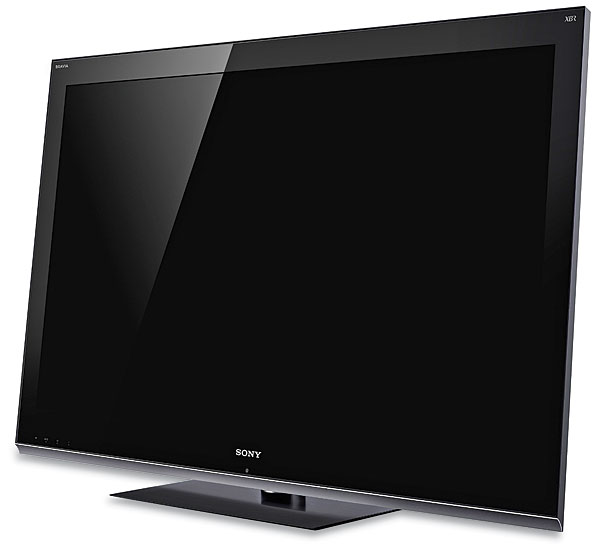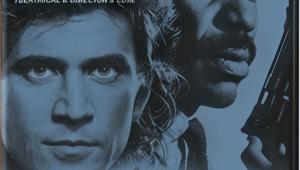Sony BRAVIA XBR-52LX900 3D LCD HDTV Page 2
 A 3D control, when set to Auto, should automatically switch to 3D when the set receives a 3D signal. But I found that when presented with a 3D format other than the one used on Blu-ray, I needed to switch it manually. The set also has a 2D-to-3D conversion mode, which you can select directly from the remote’s dedicated 3D button.
A 3D control, when set to Auto, should automatically switch to 3D when the set receives a 3D signal. But I found that when presented with a 3D format other than the one used on Blu-ray, I needed to switch it manually. The set also has a 2D-to-3D conversion mode, which you can select directly from the remote’s dedicated 3D button.
In 3D, the Sony’s setup menus offer separate picture settings, although they’re more limited than in 2D. For example, in Custom mode, the Backlight setting (odd handle for an edge-lit set) is fixed at maximum. The Picture control also defaults to maximum, but it’s adjustable. I left it on maximum to help make up for those inevitably dimmer 3D images. Sony’s Motionflow feature is also not available in the 3D Custom mode.
E-Motional Control
Motionflow is Sony’s 240-hertz, motion-blur-reducing feature. While many 240-Hz features operate at a 120-Hz refresh rate and modulate the backlight to simulate 240 Hz, Sony’s refresh rate is a true 240 Hz. When engaged (in 2D), Motionflow adds nine interpolated frames to each real frame of a 1080p/24 source to bring the onscreen refresh rate up to 240 Hz. If Motionflow is off, the picture still needs the added frames, but Motionflow repeats them rather than interpolate them.
On film-based material, Motionflow’s effect is most obvious when the separate CineMotion control is in Auto 1. I don’t like what these motion-smoothing features (Sony’s or anyone else’s) do to the look of film, so I left Motionflow off. Out of the box in 2D, Motionflow is engaged by default in the Custom mode, but you can manually defeat it.
Surf the Net, Surf the Menus
The XBR-52LX900 offers Internet features that can connect you to a wide range of Sony-partnered sites. As with the Internet features that other sets offer, you don’t need a computer, just a connection to a broadband service, either wired or wireless, via the set’s built-in wireless LAN receiver. You can also play back video, photos, or music from your network or a USB storage device.
I’ve always found Sony’s XMB (XrossMediaBar) menu system tedious to use. However, a separate Options menu lets you bypass the XMB and get to most of the useful settings, including the Picture Adjustments. There’s an onscreen iManual that discusses some of the setup options relatively thoroughly—certainly more so than the skimpy printed Setup Guide. But as is so often the case, it’s thin on specifics when it comes to explaining the video features.
The Sony’s remote doesn’t offer direct access to specific inputs. An Input button calls up an onscreen menu that shows only the connected inputs. The remote is backlit, but the lighting only outlines the buttons and not the lettering that tells you what they do.
Video Processing and 2D
The XBR-52LX900 performed nearly flawlessly on our HD Video Test Bench (see chart). Its highest-frequency chroma burst was rolled off a little in level, but it was still worthy of a pass.

The Sony’s pre-calibration color was skewed, but no more so than on most sets and not enough for the average viewer to notice. After calibration, the color snapped into place. Sony’s recent sets have been among the most headache-free to calibrate, and this one is no exception.
To achieve the 2D, 30-foot-lambert peak white level I prefer in a darkened room, I had to set the backlight to minimum. Like most LCD sets, the Sony will put out a lot more light than that if you need it. Unless you plan on watching in a sunroom, though, I don’t know why you would.
The Sony was a mixed bag at the dark end, both before and after calibration. Our measurements showed some unusual results (see HT Labs Measures), but for all practical purposes, the set’s usable black levels and shadow detail were no better than average for a modern LCD without full backlit LED local dimming.
Sherlock Holmes (2009) on Blu-ray offers a lot of dark sequences in a story that takes place in dreary Victorian London. The bright scenes are fine, but as the image darkens, a slight but progressive and unmistakable grayness sets in, beginning first at the sides of the image. The picture also looks flatter and less dimensional in dark scenes. A Panasonic TC-P50VT25 plasma [HT, Sepember 2010] sitting directly next to the Sony maintained a punchy, dimensional look across the full brightness range, even with animated fare. The dark prison scenes in Kung Fu Panda—which aren’t as difficult as the dark scenes in live-action features like Sherlock Holmes—also looked noticeably more consistent from light to dark on the plasma than they did on the Sony.













































